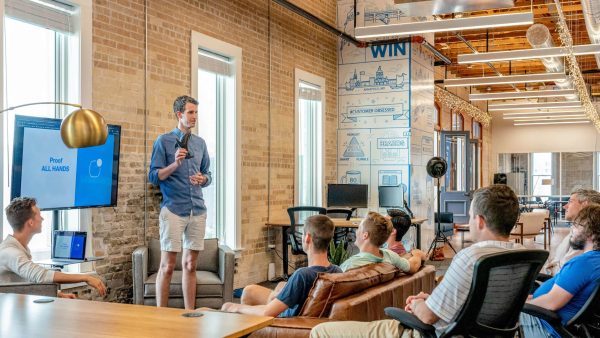The pandemic has resulted in economic and social changes that have encouraged employees to shift their career priorities. In 2022, flexibility, motivation, and skill-building have become the new priorities for corporate learning and development. According to the Society for Human Resource Management (SHRM), 55% of employees believe they could perform their jobs better if they received more training.
Therefore, a company that utilizes its employees’ learning preferences can take advantage of trends in the economy to attract and retain new talent, increase their competitive edge, lower employee turnover, and improve organizational leadership skills in their workplace.
Primary Focus of L&D Programs in 2022
Organizations should focus their L&D programs on the key areas that employees care about. According to the LinkedIn Workplace Learning Report, the primary focus areas for 2022 have been leadership training, management training, upskilling, and reskilling.
This means that employees are most interested in increasing their skill sets, particularly in organizational leadership. Therefore, focusing L&D programs on skills by creating a continuous learning environment in the workplace is the best way for organizations to attract and retain ambitious employees.
Using L&D tools to make employees better leaders not only improves their job performance but makes them more satisfied in their current positions as well. Employees who feel that their careers are advancing within a company have been shown to have a lower turnover rate, which saves businesses costly hiring and training procedures.
What Employees Want Out of Their Organization’s L&D Plans
According to the SHRM, post-pandemic employees want more flexibility in their work. This includes options for remote learning when it comes to a company’s L&D plans. They also want to retain the knowledge they learn, which is key to making them feel like their skills are advancing their careers.
To increase employee engagement and retention, L&D programs should consider adding a social element to the learning process, which nearly a third of employees mention as a priority. For example, organizations can use systems designated for discussion and socialization, even employing competition and rewards systems to foster social learning.
Employees in 2022 want to feel up-to-date in their field and engaged with their peers. L&D programs that help them progress in their careers by focusing on socialization and retention can help them feel like their learning is worth it.
What Employees Prefer to Learn
According to LinkedIn, leadership is the most demanded skill for employees who want to improve their work. Other priorities included L&D core skills and decision-making training.
Employees value both hard and soft skills in their personal career journeys. This means they value time management, leadership, communication, and collaboration skills as much as upskilling in their specific jobs. Organizations should shift their L&D strategy to cater to a worker’s entire skillset rather than focusing only on their job-related functions within the company.
How Employees Prefer to Learn
Studies show that 70% of employees prefer self-paced online courses. 62% also said they prefer a hybrid of instructor-led and online instruction over conventional learning methods. Self-guided instruction has been increasingly emphasized in employee surveys over the last decade as a better means to retain knowledge and a more attractive way to learn a company’s required skills and goals.
In 2022 and beyond, managing L&D programs that cater to employees’ learning priorities with a particular emphasis on organizational leadership will be the secret to attracting and retaining the needed talent that gives organizations an edge in their industries.


